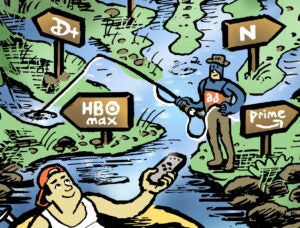 “Data-Driven Thinking” is written by members of the media community and contains fresh ideas on the digital revolution in media.
“Data-Driven Thinking” is written by members of the media community and contains fresh ideas on the digital revolution in media.
Today’s column is written by Kobi Edelstein, vice president of advertising at Appnext.
Advertising across any medium is always fluid and ever a delicate mix.
Nowhere is this truer than in the mobile app space. Paid user acquisition is necessary and can be highly effective but the path to a good acquisition strategy can be fraught with challenges – and misinformation. As such, transparency might be the single most important factor when analyzing and designing a user acquisition budget.
But traffic blending can also hold back acquisition strategies, as well as bots and organic install hijackers. Something as simple as testing is critical to ensure that all of these user acquisition efforts are paying off.
Traffic Blenders
Buying media from an ad network that doesn’t provide a breakdown of the publishers it uses to supplement its own inventory is dangerous.
Incentivized installs where users get an incentive for an app install, such as an iTunes or currency credit, can quickly drive a high number of installs. But since many of these gamers just want the incentive, the volume of users gained might be high but the quality is low. And while the publisher might well have also delivered credible users, the metrics are blended so there’s no way to distinguish true users from invalid ones.
With a transparent source you can check out the app, view the ad units and directly see who the users are that are using the app. And critically, app advertisers only pay for media that is driving high engagement levels and not for a blend of the good and the bad.
Bots: Hazards Of The Nonhuman Kind
Beware the bots, that dreadful software designed to automate the kinds of tasks people usually do on their own. There are companies abusing the ecosystem by operating bots that install and use apps. These systems are sometimes so sophisticated that they can make it past the first session activity criteria to camouflage that they’re not human.
In 2016, bots will cost mobile advertisers an estimated $7.2 billion globally. This is a steep price to pay for someone else’s fraud, not to mention the disruption of internal metrics.
To prevent this sort of activity developers and advertisers can work to identify suspicious pre-install activity, such as the use of known problematic proxies or multiple clicks at the same time or from the same Wi-Fi IP. They should also look beyond initial activity metrics after the install. For instance, they can analyze what percentage of installers used the app seven days later and look at the total number of sessions.
Again, knowing exactly where ads are running eliminates this issue.
Beware Organic Install Hijackers
Just as there are companies abusing the ecosystem by operating bots, some publishers or affiliates misuse the common attribution system, which tracks the marketing channel to attribute payment on a cost-per-install basis.
They take advantage of the attribution method of the last click to attribute users to them although the user in many cases didn’t even see an ad on their media. They generate clicks without the users actually clicking, effectively hijacking any of the users who are organically going and promoting the app. This phenomenon has recently been called “last touch attribution” or “attribution gaming.”
For example, a hijacker can add a hidden 1×1 pixel with the tracking URL of the the landing page in the App Store or Google Play. In this case, if the user didn’t click on an ad, and organically searched for this app (for example after hearing about the app from a friend) the publisher will fraudulently get credit for this install.
The real problem is that someone can do this every day, meaning that for the lifetime of the user, as long as she or he is exposed to the app or site, all organic installs will be attributed to the publisher.
Knowledge Is Everything
What’s the simple solution to avoiding the pitfalls? Know where ads are running. Developers and advertisers need to see the actual ad units. Make sure there are no pop-ups to go directly to the store and no hidden pixels.
Monitor click-through rates. If they’re very high it can mean that some or all clicks are automatically generated by the publisher to color the user.
Look at the click-to-install rate; if it’s too low, likely something is amiss and it’s another indication of automatically generated clicks.
At the same time, it’s important to realize that finding the best user acquisition strategy is always a learning curve. Even with good sources, developers and advertisers need to spend time discovering what works. It’s important to close as many cost-per-action deals as possible – or at least cost-per-install – so the risk of the learning is not on the advertiser or developer. Quickly stop what’s not working and move on.
At the end of the day, knowledge through transparency isn’t just power, it’s smart business.
Follow Appnext (@appnext_updates) and AdExchanger (@adexchanger) on Twitter.













